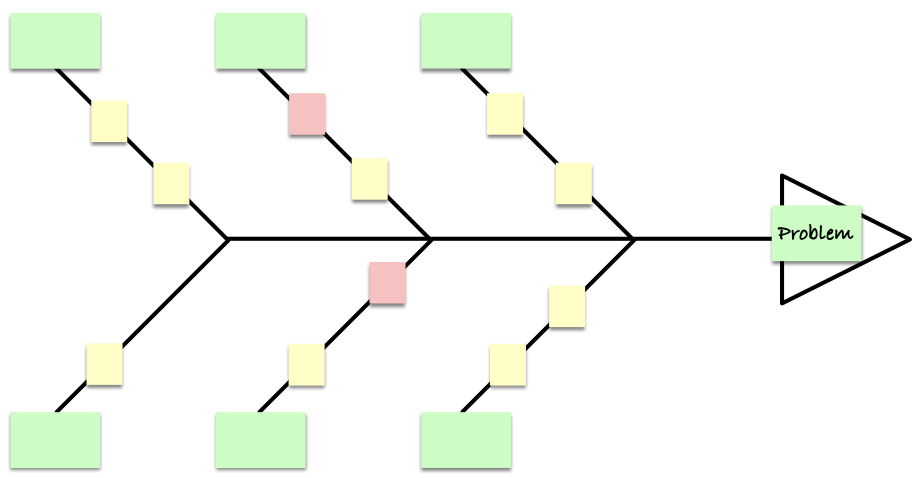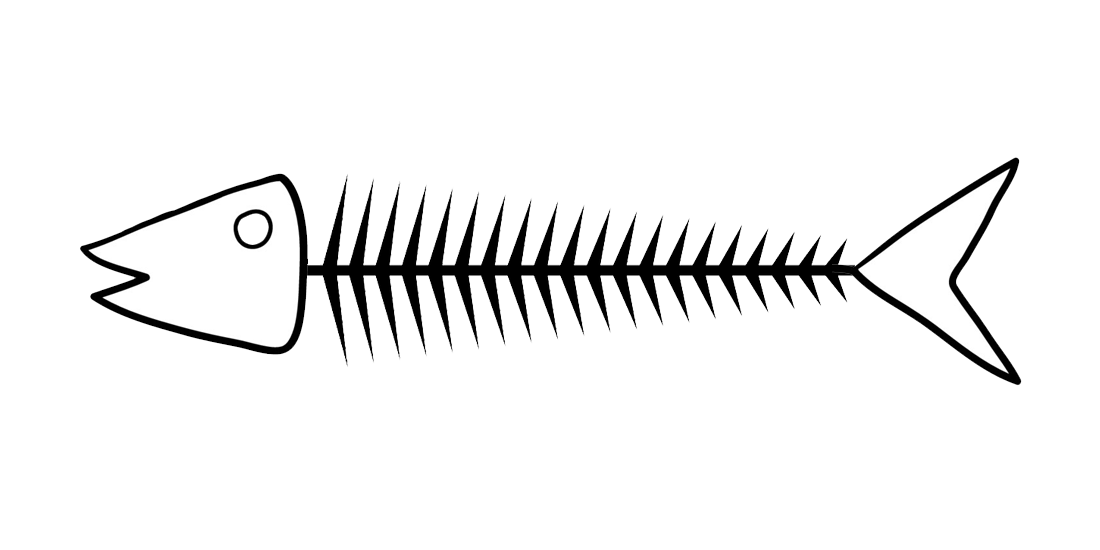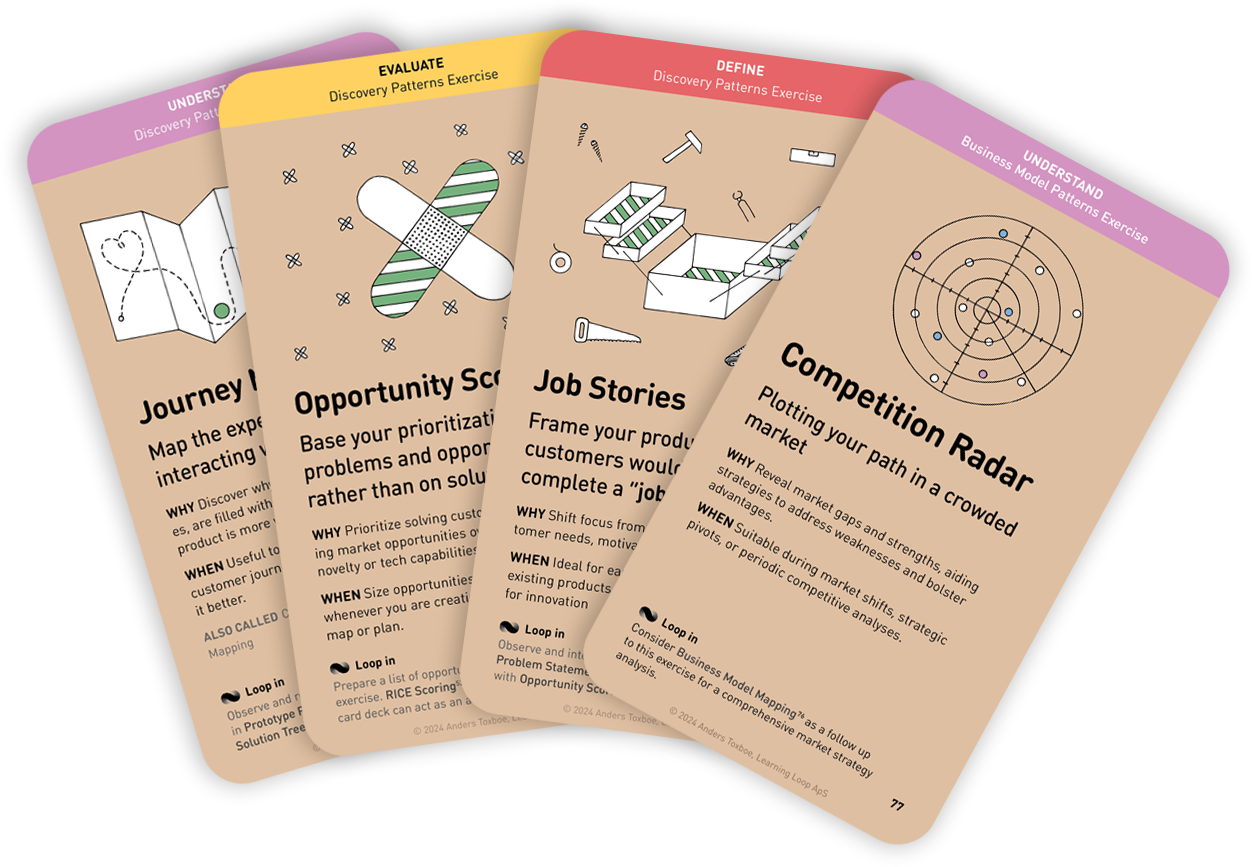Also called: Ishikawa Diagram, Cause-and-Effect Diagram
Alternative plays: Five Whys, Force Field Network, Problem Statement, Why-How Laddering
Follow-up plays: Five Whys, How Might We, Who / What / When Matrix
Timing: Planning
Run time
30-60 minutes
Group size
4-10
Why: Promote a holistic view of a problem space and identify possible causes for an effect or problem
When: Useful to explore root causes of a complex problem, generate insights, and facilitate discussions to address issues
This workshop exercise is part of the Workshop Patterns printed card deck.
A collection of workshop exercises that will help you ditch dull meetings and facilitate with confidence. It will help you master the design process and have more productive time with your team. The card deck will be ready for purchase in the end of 2023 and is now undergoing rigorous testing.
Reserve your deck!Instructions for running this play
- Prepare a problem statement before the meeting and discuss it first thing. Draw the following fishbone diagram on a large surface and place a sticky note with the problem statement in the “head”

- Discuss relevant categories of causes of the problem with the group and place a sticky note with each category at the end of each “bone”. Categories could be:
Methods, Machines (equipment), People (manpower), Materials, Measurement, Environment, Marketing - Do Silent Storming on “Why does this happen?” in a Timebox of 10 minutes. Each participant plays back their findings on the map, placing each of their sticky notes on the branch of the appropriate category. A cause can be placed on several branches.
- Again ask “Why does this happen?” in a plenum about each cause. Write sub-causes branching off the causes. Continue to ask “Why?” and generate deeper levels of causes. Layers of branches indicate causal relationships.
- When the group runs out of ideas, focus attention to places on the chart where ideas are few.
- Consider finishing off with a Who/What/When exercise or even a How Might We...
Tips to perfect this play
Master and adapt the play to fit your context and needs.
Tip: A shared understanding
Maps are for creating a shared understanding and exploring it across disciplines – between you, your team, and your stakeholders. Invite everyone relevant.
Tip: Reverse Fishbone
Start with the effect or problem and work backward to identify possible causes, challenging the team to think from a different perspective.
Tip: Multiple Fishbones
Use separate Fishbone Diagrams for different categories of causes, allowing for more focused discussions and analysis.
Tip: Follow-up with Five Whys
Consider combining with the Five Whys exercise

